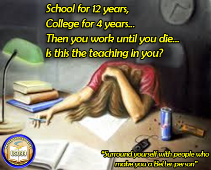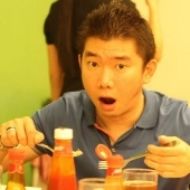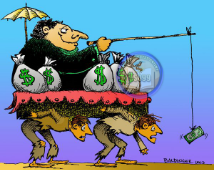The Story of Soichiro Honda
Upon graduating from middle school in 1922, Soichiro traveled to Tokyo with his father to respond to a help wanted ad at an automobile repair shop called Art Shokai. Soichiro was accepted as an apprentice at the shop. However, he became frustrated because his job only involved menial tasks such as cleaning up and babysitting the owner’s child. When he could, he watched with fascination as the auto mechanics did their jobs. He would sneak into the shop after hours just to touch the cars.
In 1923, a great earthquake called Kanto struck Tokyo and killed nearly 100,000 people. The automobile repair shop was almost completely destroyed, along with Soichiro’s dreams. But because of the earthquake, most of the mechanics quit their jobs to go spend their time helping their families rebuild. This left an opportunity for Soichiro to become a mechanic. The owner built a new temporary shop in the suburbs and began repairing cars that had been damaged in the earthquake, using Soichiro as one of his chief mechanics. Together, they bought damaged cars, fixed them up, and resold them.
At the age of 21, Soichiro opened his own automotive shop with only one employee. At first business was slow, but it began to build and within one year it began to flourish. Then another strategy struck. A severe depression that would eventually cloak the entire world in a dark cloud began in 1929. But, because of Soichiro’s excellent skills and knowledge of foreign cars, his business survived and prospered in the midst of adversity. His business grew to the point of having 15 employees.
Because of the Kanto earthquake, Soichiro understood the need to make parts that would be stronger and more durable. Soichoro saw a new solution to an old problem. He invented cast iron spokes to replace the old wooden ones. The cast iron spokes were highly celebrated at the National Industrial Exhibit and Soichiro began exporting them to other countries.
A few years later, Soichiro started making piston rings for cars. His goal was to design a piston ring that would be acceptable to the very young Toyota Corporation, and become a mass production supplier to Toyota. But he was having trouble coming up with a piston ring that could be mass produced. The problem was in the composition of the metal. It looked like another dead end. But heroes see alternate paths to their dreams. Knowing that he could not rely on his middle school education any longer, he consulted with Professor Takashi Tashiro at the Hamamatsu Technical School. Then, at the age of 30, Soichiro enrolled in a technical high school to learn metallurgy. The teenagers that surrounded him at the high school stared at him and laughed, but Soichiro was oblivious to them. Soichoro did not bother to take graduation exams. Upon being informed that he would not receive a graduation diploma, Soichiro retorted that a diploma was worth less than a movie theater ticket. “A ticket guarantees that you can get into the theater. But a diploma doesn’t guarantee that you can make a living.”
In 1936, he built a racecar with his brother Benjiro, using an old airplane engine and handmade parts. But the car crashed during a race, causing Soichoro a broken shoulder and severe facial injuries. Now he was seriously injured, his savings were gone, and the piston ring business was failing. But Soichiro did not see a brick wall. Instead, he kept trying to come up with a piston ring that Toyota would buy. He took fifty of his best piston rings out of a group of 30,000 to try to sell them to Toyota. He was struggling financially and he even had to pawn his young wife’s jewelry to make ends meet. Can you imagine your spouse’s reaction if you pawned their most prized possession? Toyota rejected his proposal because only three of the fifty piston rings passed inspection. It was another dead end. He abandoned that business and went to work for another small automotive company so he could have a steady paycheck.
While at the new company, Soichiro invented a piston ring polishing machine. It was revolutionary and simple to operate. After three long years of trial and error, his creative persistence paid off and now he was making excellent piston rings.
In 1942, the company he worked for was acquired by Toyota. Toyota was now finally using the piston rings that he had designed. Soichiro eventually became the Executive Director of the company. The factory produced military supplies, with the piston rings going into military aircraft and ships. During this time, Soichiro also designed metal propellers to replace the old wooden ones, Soichiro also invented an automatic propeller-cutting machine, which reduced the time needed to make a propeller from one week to fifteen minutes.
In 1945, the plant was destroyed by a U.S. air raid along with most of the city it was in. It looked like another dead end. But Soichiro saw what others around him did not see. He collected the metal from leftover military vehicles and airplanes, moved to a new city to open a small factory, and continued production on a small scale. Finally, the end of the war brought an end to his piston ring production business. Dead end again.
Tokyo and most industrial cities had been destroyed in the war. Fields had been burned and almost all of Japan was in disarray. There was very little transportation. Gasoline was rationed and sometimes impossible to find. Soichiro couldn’t even get enough gasoline to drive his car into town to buy food for his family. The buses and trains were so crowded that people had to crawl in and out of the windows.
But he was a true hero. Again, he saw what others could not see. In 1946, Soichiro realized that what people needed was a cheap and quick way to get around town. He took regular bicycles and installed small engines to them, which was left over from the war. They were about the size of a lawnmower engine. But he soon ran out of military surplus engines. Another dead end.
Did this stop Soichiro? No. He decided to start making his own small engines. However, there was one small problem – he had no money. So he wrote letters to bicycle shop owners throughout Japan, explaining his idea to make motorbikes and asking them to invest. With the money that a few of them invested, he started manufacturing his own engines and motorbikes. The first motorbikes he made were too big and bulky, and very few Japanese bought them. Dead end again.
But, like a smart bomb, Soichiro listened to the feedback and adjusted accordingly. Soichiro changed his approach. The new design won the Emperor’s Award. In time, this little motorbike captured 60% of the Japanese market and Soichiro began exporting them to Taiwan.
In 1948, Soichiro established the Honda Motor Company. By 1949 Honda’s production of motorbikes was up to 1,000 units per month. Also during that year, Honda designed a 2-stroke, 98cc engine and thus, the first lightweight motorcycle was born. By 1951, Honda had 150 Employees and annual sales of 330 million yen. A year later, the number of employees had increased to 1,300 and sales reached 2,438 million yen per year.
But at the end of the Korean War, a major recession hit the economy and it became impossible for Honda to pay for the manufacturing equipment that he needed. Would his company go under? No. He borrowed money from the Mitsubishi Bank and his business was saved.
In 1959, Soichiro started the American Honda Motor Company. By the early 1960s Honda had expanded his business and was making small four-wheeled vehicles. Honda’s S800 model was exhibited at automobile shows in Europe where it received very high praise.
In the 1970′s America went through a fuel shortage and consumers were looking for alternatives to the giant gas guzzlers made by American manufacturers. The Honda Civic and Honda Accord were the answer. By the 1980′s the Honda Motor Company was one of the largest automotive companies in the world.
A must watch video of Humble Founder of Honda Motors
Did This Blog Help You? If so, If they did please do me a favor and share them with someone who this could benefit from it. I would greatly appreciate if you Like my Facebook Page. I’ll be glad share my opinion, strategies and techniques in order for me to help you in some ways. Good Luck!
Your Friend in Success,
Success is a journey, not a destination. The doing is often more important than the outcome. -Arthur Ashe

Success Story Founder of Honda Motors (Soichiro Honda)











